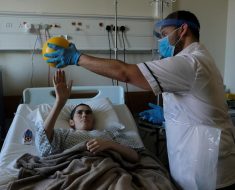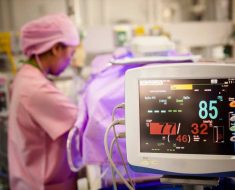 Reviewed
ReviewedCombined IgM and IgG rapid antibody test proves effective for COVID-19 diagnosis
 Reviewed
Reviewed
Announcing a new article publication for Zoonoses journal. The COVID-19 pandemic, which was caused by SARS-CoV-2, has had a significant effect on global public health, economies, and societies worldwide. Serum antibody testing is a critical method for the diagnosis of COVID-19 and can complement RT-PCR in the diagnosis of COVID-19 patients; however, the performance of rapid antibody assays in the clinical setting has not been established.
Rapid antibody assays were evaluated by investigating 296 COVID-19-positive individuals and 542 negative individuals confirmed by clinical diagnosis. The clinical diagnostic results were used as controls to evaluate the sensitivity, specificity, positive predictive value (PPV), negative predictive value (NPV), kappa, and 95% confidence interval (CI) of the rapid tests.
IgM-positivity had a sensitivity of 86.1% and specificity of 99.1%. IgG-positivity had a sensitivity of 86.5% and specificity of 98.7%. The sensitivity of combined IgM- and IgG-positivity in clinically confirmed patients was 73.1% in the early stage (1-7 days after symptom onset) and reached 99% 15 days after symptom onset. The concordance between rapid antibody-positive tests and clinical diagnosis-positivity had a kappa value of 0.93. In addition, the false-positive rate of IgM and IgG combined nucleic acid detection was 30% in the early stage.
The combined use of IgM and IgG could serve as a more suitable alternative detection method for patients with COVID-19. The rapid antibody test can be considered as an excellent supplementary approach for detecting SARS-CoV-2 in clinical application.
Compuscript Ltd
Liu, L., et al. (2023). Clinical Application of SARS-CoV-2 IgM and IgG Antibody Detection Using the Colloidal Gold Immunochromatography Assay. Zoonoses. doi.org/10.15212/zoonoses-2023-0020.
Posted in: Device / Technology News | Disease/Infection News
Tags: Antibody, Assay, covid-19, Diagnostic, Nucleic Acid, Pandemic, Public Health, Research, SARS, SARS-CoV-2





